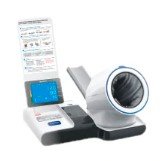Ensuring Safe Vaccine Administration in Medical Labs and Phlebotomy Clinics: Guidelines, Training, and Quality Control
Summary
- Stringent guidelines and protocols are in place to ensure the safe administration of vaccines in medical labs and phlebotomy clinics in the United States.
- Proper training and certification of healthcare professionals who administer vaccines play a crucial role in maintaining safety standards.
- Routine inspections, audits, and Quality Control measures help to ensure that vaccine administration facilities comply with safety protocols.
Introduction
Vaccines play a crucial role in preventing the spread of Infectious Diseases and protecting public health. In the United States, medical labs and phlebotomy clinics are among the healthcare facilities responsible for administering vaccines to patients. To ensure the safety and efficacy of vaccine administration, stringent guidelines and protocols are in place to regulate the process and minimize the risk of adverse events.
Regulatory Guidelines and Protocols
The Centers for Disease Control and Prevention (CDC) and the Food and Drug Administration (FDA) are the primary regulatory bodies responsible for overseeing vaccine administration in the United States. These agencies collaborate to develop and enforce guidelines and protocols that healthcare facilities must follow to ensure the safe and effective administration of vaccines.
Some key measures in place to ensure safety during vaccine administration include:
- Proper storage and handling of vaccines to maintain their potency and effectiveness.
- Adherence to strict aseptic techniques during vaccine preparation and administration to prevent contamination.
- Verification of patient identity and medical history to ensure the suitability of the vaccine and identify any contraindications.
- Documentation of vaccine administration details, including the type of vaccine, dosage, route of administration, and any adverse reactions.
- Monitoring and reporting of vaccine adverse events to the Vaccine Adverse Event Reporting System (VAERS) to track vaccine safety.
Training and Certification
One of the critical factors in ensuring safe vaccine administration is the proper training and certification of healthcare professionals who administer vaccines. In the United States, phlebotomists, medical laboratory technicians, and other healthcare professionals must undergo specialized training to become certified vaccine administrators.
Training programs cover essential topics such as vaccine storage and handling, infection control, vaccine administration techniques, and emergency response procedures. Upon completion of training, healthcare professionals must pass a certification exam to demonstrate their competence in vaccine administration.
Continuing Education and training are also essential to keep healthcare professionals up-to-date on the latest vaccine recommendations, guidelines, and safety protocols. Regular training sessions help ensure that Healthcare Providers maintain high standards of practice and adhere to best practices in vaccine administration.
Quality Control and Assurance
To maintain safety standards in vaccine administration facilities, routine inspections, audits, and Quality Control measures are implemented to monitor compliance with guidelines and protocols. Healthcare facilities that administer vaccines are subject to regular inspections by regulatory authorities to assess their adherence to safety standards.
Quality Control measures include:
- Monitoring and documentation of vaccine storage temperatures to ensure vaccine potency.
- Regular equipment maintenance and calibration to guarantee accurate vaccine dosing.
- Training and competency assessments for healthcare professionals involved in vaccine administration.
- Review of vaccine administration records to verify proper documentation and reporting of adverse events.
- Participation in quality improvement initiatives to enhance vaccine administration practices and patient safety.
Conclusion
In conclusion, ensuring the safe administration of vaccines in medical labs and phlebotomy clinics is a critical aspect of public health. Stringent guidelines, proper training, and Quality Control measures are essential to minimize the risk of adverse events and maintain the integrity of the vaccination process. By adhering to safety protocols and guidelines, healthcare facilities can help protect patients and communities from vaccine-preventable diseases.

Disclaimer: The content provided on this blog is for informational purposes only, reflecting the personal opinions and insights of the author(s) on the topics. The information provided should not be used for diagnosing or treating a health problem or disease, and those seeking personal medical advice should consult with a licensed physician. Always seek the advice of your doctor or other qualified health provider regarding a medical condition. Never disregard professional medical advice or delay in seeking it because of something you have read on this website. If you think you may have a medical emergency, call 911 or go to the nearest emergency room immediately. No physician-patient relationship is created by this web site or its use. No contributors to this web site make any representations, express or implied, with respect to the information provided herein or to its use. While we strive to share accurate and up-to-date information, we cannot guarantee the completeness, reliability, or accuracy of the content. The blog may also include links to external websites and resources for the convenience of our readers. Please note that linking to other sites does not imply endorsement of their content, practices, or services by us. Readers should use their discretion and judgment while exploring any external links and resources mentioned on this blog.
